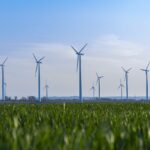Long-term water shortage management and Community Involvement and Education explained
Long-term water shortage management, Community Involvement and Education, and more…
The Great Basin’s Water Cycle: A Drying Reality
The sun evaporates water from lakes, rivers, and soil, leaving the Great Basin drier than ever. Climate change exacerbates this natural process, creating a severe water shortage.
Action is crucial to address this crisis. Public education and community involvement are essential to fostering water conservation and understanding the challenges of water scarcity in this arid region.
The Great Basin: A Thirsty Land
TL;DR: The Great Basin is facing a serious water shortage. Climate change is making things worse, but there are solutions like conserving water, using new irrigation methods, and working together to solve the problem.
The Great Basin’s Water Journey
The Great Basin is a vast, high-desert region in the western United States, including parts of Nevada, Utah, California, Oregon, and Idaho. Like a giant bathtub, the Great Basin is mostly closed off, meaning water doesn’t flow out to the sea. Instead, the water cycle plays out within the basin’s borders, with the mountains acting like a big water tower.
Here’s how water moves through the Great Basin:
- Evaporation: The sun heats up water in lakes, rivers, and the soil, causing it to evaporate and rise into the air as water vapor.
- Condensation: As the water vapor rises, it cools and condenses into clouds.
- Precipitation: When the clouds get full of water droplets, they release the water as rain or snow.
- Runoff: Rain and melted snow flow downhill, creating rivers, streams, and groundwater.
- Infiltration: Some water soaks into the ground, replenishing underground water supplies.
The Thirst for Water: Challenges and Impacts
The Great Basin is a dry place, and it’s getting even drier due to climate change. Higher temperatures mean more evaporation, which leaves less water in rivers and lakes. Plus, climate change is making snowfall more unpredictable, so the water supply from the mountains can be very uneven.
What are the effects of these water shortages?
- Drought: The lack of water can lead to long periods of drought, which harms plants and animals, including people.
- Agriculture Struggles: Farmers need water to grow crops, so water shortages can hurt the agricultural industry.
- Ecosystems at Risk: Dry conditions can threaten wildlife habitats and make it harder for plants to survive.
- Conflicts Over Resources: As water becomes more scarce, there can be disagreements between cities, farmers, and environmental groups about how to share the limited water supply.
Finding Solutions to the Water Crisis
It’s important to act now to address the water shortage in the Great Basin. Here are some ways we can work together to secure a sustainable water future:
1. Conservation:
- Reduce Water Use: We can all do our part by using less water in our homes, schools, and businesses. This could mean taking shorter showers, watering our lawns less often, or fixing leaky faucets.
- Smart Appliances: Choosing water-efficient appliances, like dishwashers and washing machines, can make a big difference.
2. Innovative Irrigation:
- Drip Irrigation: This method delivers water directly to plant roots, reducing evaporation and waste.
- Water-Saving Technologies: New technologies like sensors and software can help farmers use water more efficiently.
3. Policy Measures:
- Water Management Plans: Governments can create plans to manage water resources more effectively and prioritize water use during droughts.
- Incentives for Conservation: Offering rebates or tax breaks for water-saving measures can encourage people to reduce their water usage.
4. Community Involvement and Education:
- Public Awareness: Educating people about the importance of water conservation and the challenges of water scarcity is crucial.
- Community Programs: Local organizations can help people learn about water-saving practices and participate in conservation efforts.
The Active Climate Rescue Initiative
Active Climate Rescue is a non-profit organization dedicated to solving the Great Basin’s water supply shortages. They work on several fronts to help the region, including:
- Research: Actively Climate Rescue supports research into new ways to conserve and manage water resources.
- Community Outreach: They work with local communities to educate people about water conservation and climate change.
- Policy Advocacy: They push for policies that promote sustainable water management and address the impacts of climate change.
A Collaborative Effort for a Sustainable Future
By working together, we can create a more sustainable future for the Great Basin. Through conservation efforts, innovative technologies, and responsible water management, we can ensure that this beautiful region has enough water to support its diverse ecosystems and communities for generations to come. It’s time for us to think about the long-term impacts of our choices and make informed decisions that protect our precious water resources.
More on Long-term water shortage management…
- ## Long-Term Water Shortage Management Keywords:
- water scarcity management
- drought preparedness
- long-term water security
- water conservation strategies
- sustainable water use
- water resource management
- water infrastructure development
- rainwater harvesting
- water recycling and reuse
- desalination technology
- water efficiency audits
- water footprint analysis
- agricultural water management
- urban water management
- water demand management
- water policy and regulation
- water pricing strategies
- climate change and water scarcity
- water crisis solutions
- water stewardship
- drought mitigation
- water stress management
- groundwater management
- surface water management
- integrated water resources management
- water governance
- water security assessment
- water risk management
- water footprint reduction
- ## Community Involvement and Education Keywords:
- community water conservation
- public awareness campaigns
- water education programs
- citizen science for water
- community water monitoring
- participatory water management
- stakeholder engagement in water
- water literacy
- community water projects
- water conservation workshops
- water saving tips for communities
- community drought planning
- water conservation education for children
- community water audits
- water resource advocacy
- water conservation incentives
- community water conservation initiatives
- public-private partnerships for water
- community water equity
- water justice
- water conservation outreach
- community-based water management
- water conservation advocacy
- water conservation communication
- This list aims to cover various aspects of long-term water shortage management and community involvement and education. You can use these keywords to research, write content, or optimize your website for search engines. Remember to tailor the keywords to your specific audience and content.




